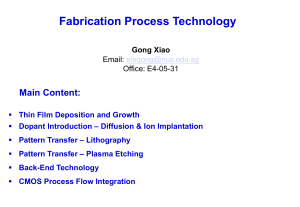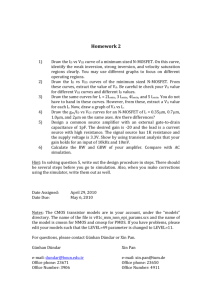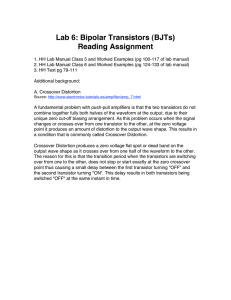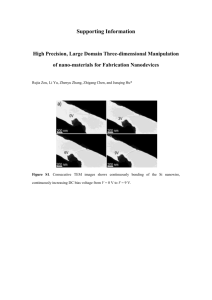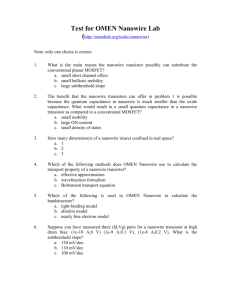A 300K Si Nanowire Transistor Closely-Coupled
advertisement
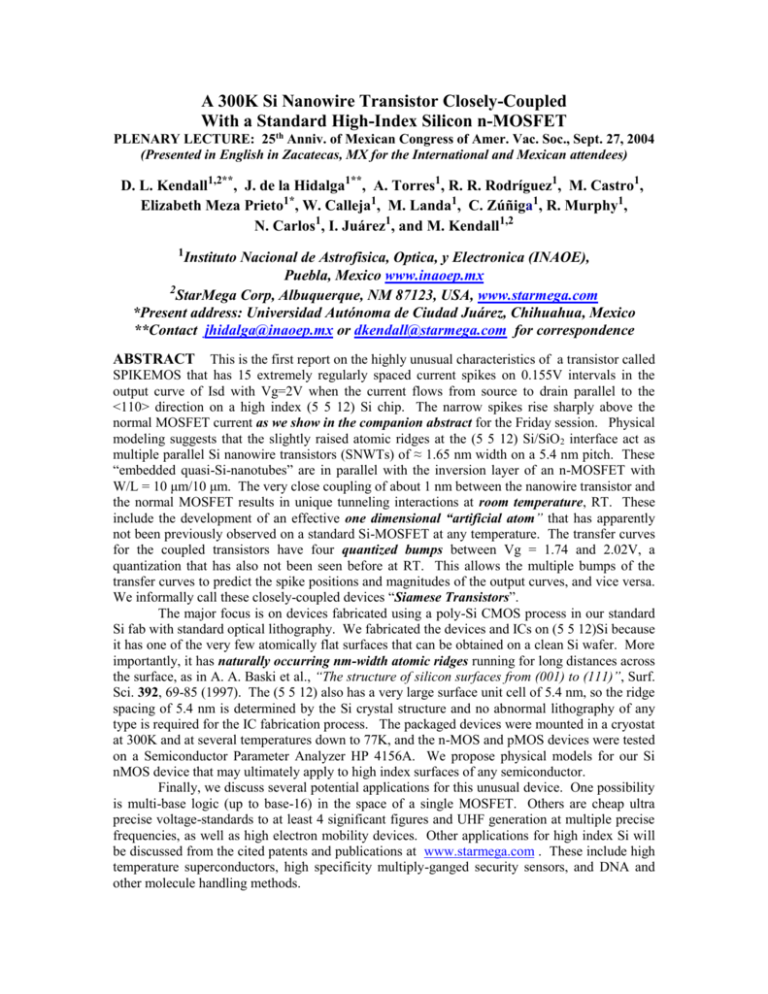
A 300K Si Nanowire Transistor Closely-Coupled With a Standard High-Index Silicon n-MOSFET PLENARY LECTURE: 25th Anniv. of Mexican Congress of Amer. Vac. Soc., Sept. 27, 2004 (Presented in English in Zacatecas, MX for the International and Mexican attendees) D. L. Kendall1,2**, J. de la Hidalga1**, A. Torres1, R. R. Rodríguez1, M. Castro1, Elizabeth Meza Prieto1*, W. Calleja1, M. Landa1, C. Zúñiga1, R. Murphy1, N. Carlos1, I. Juárez1, and M. Kendall1,2 1 Instituto Nacional de Astrofisica, Optica, y Electronica (INAOE), Puebla, Mexico www.inaoep.mx 2 StarMega Corp, Albuquerque, NM 87123, USA, www.starmega.com *Present address: Universidad Autónoma de Ciudad Juárez, Chihuahua, Mexico **Contact jhidalga@inaoep.mx or dkendall@starmega.com for correspondence ABSTRACT This is the first report on the highly unusual characteristics of a transistor called SPIKEMOS that has 15 extremely regularly spaced current spikes on 0.155V intervals in the output curve of Isd with Vg=2V when the current flows from source to drain parallel to the <110> direction on a high index (5 5 12) Si chip. The narrow spikes rise sharply above the normal MOSFET current as we show in the companion abstract for the Friday session. Physical modeling suggests that the slightly raised atomic ridges at the (5 5 12) Si/SiO2 interface act as multiple parallel Si nanowire transistors (SNWTs) of ≈ 1.65 nm width on a 5.4 nm pitch. These “embedded quasi-Si-nanotubes” are in parallel with the inversion layer of an n-MOSFET with W/L = 10 μm/10 μm. The very close coupling of about 1 nm between the nanowire transistor and the normal MOSFET results in unique tunneling interactions at room temperature, RT. These include the development of an effective one dimensional “artificial atom” that has apparently not been previously observed on a standard Si-MOSFET at any temperature. The transfer curves for the coupled transistors have four quantized bumps between Vg = 1.74 and 2.02V, a quantization that has also not been seen before at RT. This allows the multiple bumps of the transfer curves to predict the spike positions and magnitudes of the output curves, and vice versa. We informally call these closely-coupled devices “Siamese Transistors”. The major focus is on devices fabricated using a poly-Si CMOS process in our standard Si fab with standard optical lithography. We fabricated the devices and ICs on (5 5 12)Si because it has one of the very few atomically flat surfaces that can be obtained on a clean Si wafer. More importantly, it has naturally occurring nm-width atomic ridges running for long distances across the surface, as in A. A. Baski et al., “The structure of silicon surfaces from (001) to (111)”, Surf. Sci. 392, 69-85 (1997). The (5 5 12) also has a very large surface unit cell of 5.4 nm, so the ridge spacing of 5.4 nm is determined by the Si crystal structure and no abnormal lithography of any type is required for the IC fabrication process. The packaged devices were mounted in a cryostat at 300K and at several temperatures down to 77K, and the n-MOS and pMOS devices were tested on a Semiconductor Parameter Analyzer HP 4156A. We propose physical models for our Si nMOS device that may ultimately apply to high index surfaces of any semiconductor. Finally, we discuss several potential applications for this unusual device. One possibility is multi-base logic (up to base-16) in the space of a single MOSFET. Others are cheap ultra precise voltage-standards to at least 4 significant figures and UHF generation at multiple precise frequencies, as well as high electron mobility devices. Other applications for high index Si will be discussed from the cited patents and publications at www.starmega.com . These include high temperature superconductors, high specificity multiply-ganged security sensors, and DNA and other molecule handling methods.


